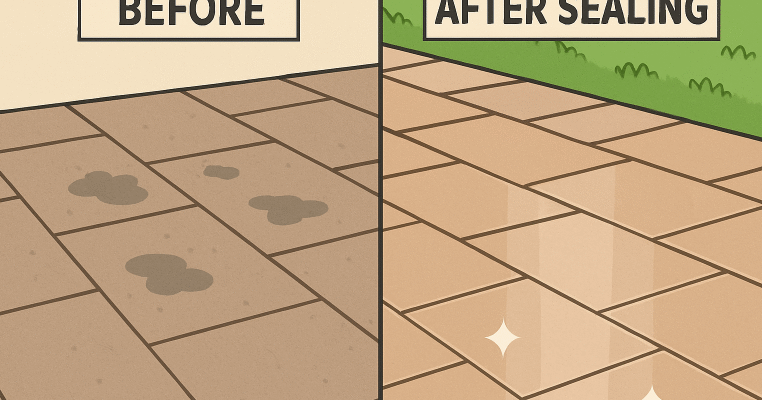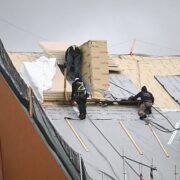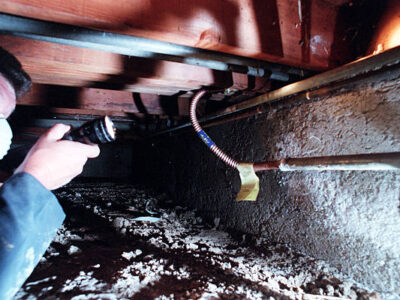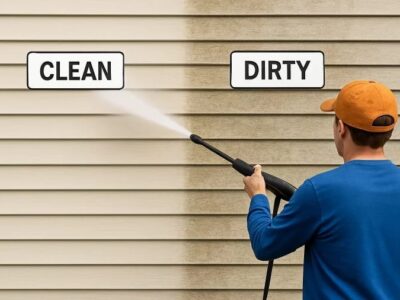Key Takeaways
- Concrete sealers add a protective barrier, shielding driveways and patios from moisture, stains, and environmental damage.
- Two main sealer types, penetrating and film-forming, offer unique benefits based on your property’s specific needs.
- Consistent maintenance and timely reapplication of sealers are crucial for maximizing the lifespan of concrete surfaces.
Table of Contents
- Introduction
- Importance of Sealing Concrete Surfaces
- Types of Concrete Sealers
- Benefits of Using Concrete Sealers
- Application Best Practices
- Maintenance and Reapplication
- Environmental and Safety Considerations
Introduction
Concrete patios and driveways bring both value and practicality to homes, yet constant exposure to weather, vehicle fluids, and daily use can quickly diminish their appearance and durability. One of the most effective ways to extend the lifespan of these surfaces is by applying a high-quality concrete sealer. Regular sealing not only guards against damage but also simplifies upkeep and reduces long-term costs. For homeowners seeking reliable solutions, Concrete sealing and waterproofing in Utah trusted experts provide professional results and the expertise needed to keep driveways and patios looking their best.
Sealing works by forming a barrier over the porous surface of concrete, blocking the absorption of water, oils, and grimy contaminants. This protection is especially valuable in climates that experience dramatic temperature changes or heavy rainfall, where unsealed concrete is vulnerable to cracking, spalling, and other structural issues. The right sealer can enhance a patio’s appearance and make your driveway more resistant to automotive oils, de-icing salts, and UV rays.
Choosing between the different types of concrete sealers can be confusing, as each product offers specific benefits for various surfaces and conditions. Understanding your climate, usage, and aesthetic preferences will help you pick a sealer that meets your needs and prolongs the lifespan of your investment.
Along with initial application, ongoing maintenance and regular reapplication of concrete sealer are essential in protecting surfaces for years to come. Without this, the sealer’s effectiveness diminishes, leaving concrete open to the harsh elements. Knowledgeable homeowners can ensure a great-looking and long-lasting property by following a reliable sealing and maintenance routine.
Importance of Sealing Concrete Surfaces
All concrete contains millions of microscopic pores that readily absorb water, chemicals, and dirt, leading to dark stains, ugly cracks, and dangerous surface deterioration. Without a sealer, rain or snow will seep in, freeze, and expand, causing the surface to break apart over time. Sealing is an invisible defense, reducing the risk of freeze-thaw damage, stains, and costly repairs, especially in colder climates or areas with heavy de-icing salt usage. According to Bob Vila, sealing is critical for maintaining both the appearance and structural integrity of exterior concrete.
Types of Concrete Sealers
Not all concrete sealers are the same. Choosing one depends on your unique needs and environmental conditions:
Penetrating Sealers
These sealers soak into the surface, forming a chemical barrier within the concrete to repel water, de-icing chemicals, and oil. They don’t alter the appearance of your concrete, making them ideal for homeowners seeking a “bare” look. Penetrating sealers generally last 5 to 10 years, depending on use and exposure, making them a popular choice for driveways and patios in areas with harsh climates.
Film-Forming Sealers
Film-forming sealers create a visible protective layer that can add shine and enrich the color of concrete. Whether you’re looking for a wet look or just added stain and UV protection, these sealers can last between 1 and 3 years and are easy to refresh. Their main downside is that they may become slippery when wet, so anti-slip additives should be considered for walkways and pool decks.
Benefits of Using Concrete Sealers
Applying a good concrete sealer brings several meaningful benefits for homeowners:
- Longer Surface Life: Sealers slow down aging by repelling water and salt and minimize costly repairs due to cracks or spalling.
- Enhanced Curb Appeal: Film-forming options can rejuvenate old concrete, making it look fresh and improving property value and aesthetics.
- Stain Resistance: Oil, grease, and other contaminants are less likely to penetrate sealed concrete, so cleaning is easier.
- Freeze-Thaw Defense: With water locked out, the risk of splitting or chipping during temperature swings is dramatically reduced.
Application Best Practices
To get the most out of your sealer, proper preparation and application are essential:
- Surface Preparation: Sweep and power wash the concrete to remove dirt, debris, and old sealant residues. Let it dry completely before sealing.
- Product Selection: Match the sealer to your region’s needs: freeze-thaw resistance for cold climates, UV resistance for sunny spots, or oil resistance for driveways.
- Good Weather: Apply sealer during mild, dry conditions. Avoid rain or direct hot sun, which can impact drying and adhesion.
- Tools and Technique: Use a paint roller or sprayer for even coverage. Follow product-specific instructions for the number of coats, drying time, and cleanup.
Maintenance and Reapplication
Even the most durable sealer will eventually wear down. Periodic inspection checking for dulling, stains, or water no longer beading will tell you it’s time for another application. Most driveways and patios need resealing every 2 to 5 years, but high-traffic zones or locations with extreme weather may need it annually. Keeping debris off the surface and cleaning up spills as they happen helps maximize protective benefits and curb appeal.
Environmental and Safety Considerations
- Environmental Impact: Low-VOC and water-based sealers are safer for your family and the environment, and often required by local codes.
- Slip Risk: Sealed concrete, especially if glossy, can become slippery. If you’re sealing steps, walkways, or poolside areas, ask about anti-slip additives.
- Safe Disposal: Never pour leftover sealer or wash water down drains. Always dispose of it according to local hazardous waste guidelines to protect waterways and soil.
Proper sealing is vital in preserving the durability and appearance of driveways and patios. It creates a protective layer that shields surfaces from water damage, stains, UV rays, and everyday wear caused by traffic or weather changes. Selecting the right sealing product for your material and climate ensures optimal results, while a regular maintenance schedule helps prevent cracks and fading. This proactive care extends the life of your surfaces and enhances curb appeal, protecting your property’s long-term value.














Comments